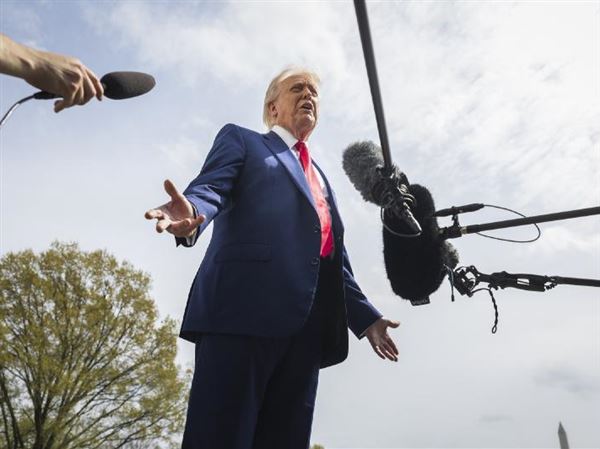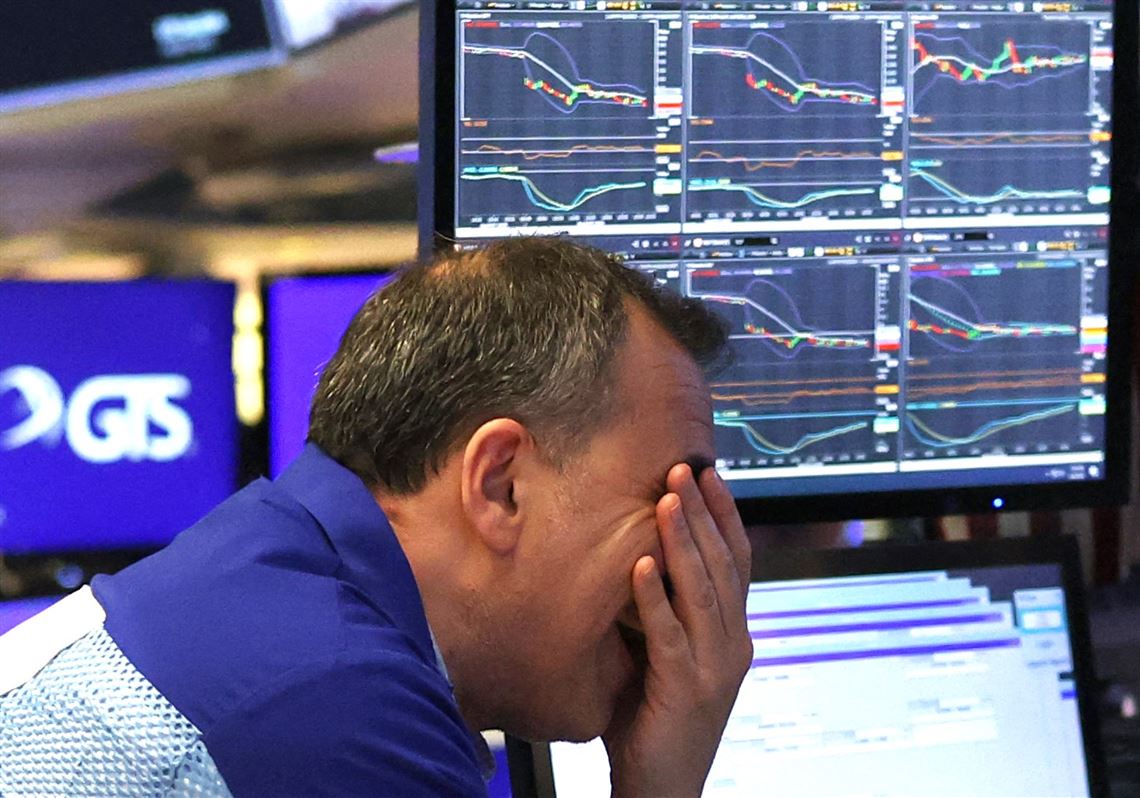On April 3 and 4, sharp declines in the stock market wiped out $5 trillion in value. Which raises the question: If $5 trillion can be annihilated in 48 hours, how real was it to begin with?
“It’s just money,” says bank CEO John Tuld in the 2011 masterpiece “Margin Call,” which dramatizes the Wall Street turmoil that kicked off the Great Recession. “It’s made up. Pieces of paper with pictures on it so we don’t have to kill each other just to get something to eat.”
I’ll go further: It’s hardly even pieces of paper anymore. It’s numbers on a screen that go up and down, movements we trust signify something real. And they do — as long as we all continue to agree that they do.
Fluctuating numbers
The numbers on the screen have been fluctuating wildly, mostly down, because the most powerful man in the world has introduced unprecedented uncertainty and friction, in the form of barriers to trade, into the system that’s designed to make the numbers go up. But should making the numbers go up be the point of the global economy?
The weekend after the crash, my family took a drive through the Mon Valley. We saw towns like Coal Center (population 110, but once 816), Elco (261, once 944), Roscoe (711, once 1,480), Allenport (483, once 1,078), Stockdale (422, once 907) and the comparatively thriving Speers (1,080, once 1,479).
During the time between peak population and now, the numbers on the screens — the numbers everyone important cares about — have gone up almost continuously. The S&P 500 is about 10 times what it was 50 years ago this month. Gross domestic product, which the Federal Reserve defines as “the market value of the goods and services produced by labor and property located in the United States,” is nearly 20 times what it was a half century ago.
These numbers do represent the expansion of business activity in the U.S., and that’s not nothing. In particular, they represent the country’s continued financial dominance of both friends and rivals, and in particular the country’s economic resilience, as a whole.
What they don’t represent is the equitable distribution of resources, and therefore of opportunity and of hope for the future. They don’t represent flourishing of the complete human person, or of communities of persons. And it’s a serious and common mistake to believe that they do.
Not good news for everyone
I don’t believe Donald Trump has human flourishing in mind as he pursues his chaotic tariff strategy (a generous word for his decision-making). But I also don’t think many of his opponents, obsessed by the numbers on the screen and suddenly deeply committed to upholding a strictly libertarian view of global capitalism, are considering the people and communities who are left behind while the numbers go up.
About 40% Americans own no stock at all (though they may be exposed to the market through pension funds), and the wealthiest 10% own over 90% of publicly traded equities. People over 55, meanwhile, control about 80% of the market, largely in retirement accounts. Perhaps young middle-class Americans should own equities, but generally they don’t, at least not in appreciable numbers.
Meanwhile, GDP measures the value of a $20,000 roll of steel the same as a $20,000 consulting contract. The first goes to building something tangible that may benefit everyone. Does the second? Measurements of GDP make no allowance for the way many Americans experience it, like the declining quality of goods purchased for the same price and the rising cost of necessities, from food to cars.
Some will point out that as the numbers rise, unemployment goes down. It’s at a historic low in Pittsburgh and across the country. But again, the good news leaves out many. Those figures don’t account for the equally historic number of able-bodied prime-age men who’ve dropped out of the labor force entirely — that is, they aren’t working and aren’t looking. There are 7 million of them, or over 10% of men 25 to 54.
These are also the men who are killing themselves at unprecedented rates. Recreational drugs and social media and plastic junk from China, it appears, do not fill the void of meaning typically filled by dignified work and relationships.
Left-behind America
The pain of millions of Americans in places like Elco and Roscoe — and also in downwardly mobile suburbia, and in declining urban neighborhoods, and all over the country — was dismissed for generations as the regrettable but acceptable cost of making the numbers go up, while the benefits largely accrued to the already comfortable. Dismissed, or ignored.
Elco and Roscoe aren’t coming back, even with best and most beautiful tariffs the world has ever seen, and I doubt most Mon Valley residents expect they will. But who could blame them, and millions of others in left-behind America, for being open to trying something — anything — different, when the same neoliberal solutions applied over and over again delivered them worse than nothing?
If Trump’s tariffs cause lasting instability, it will be tempting in four or 40 years to remember them as the foolish abuse of a robust American economy and a stable, sustainable global system. But that will be a memory of what the numbers said, and how the comfortable flourished, rather than of how everyone in America lived.
Brandon McGinley’s previous column was “I don’t want my son to fall in love with the Pirates.”
First Published: April 11, 2025, 2:51 p.m.
Updated: April 11, 2025, 6:29 p.m.

















